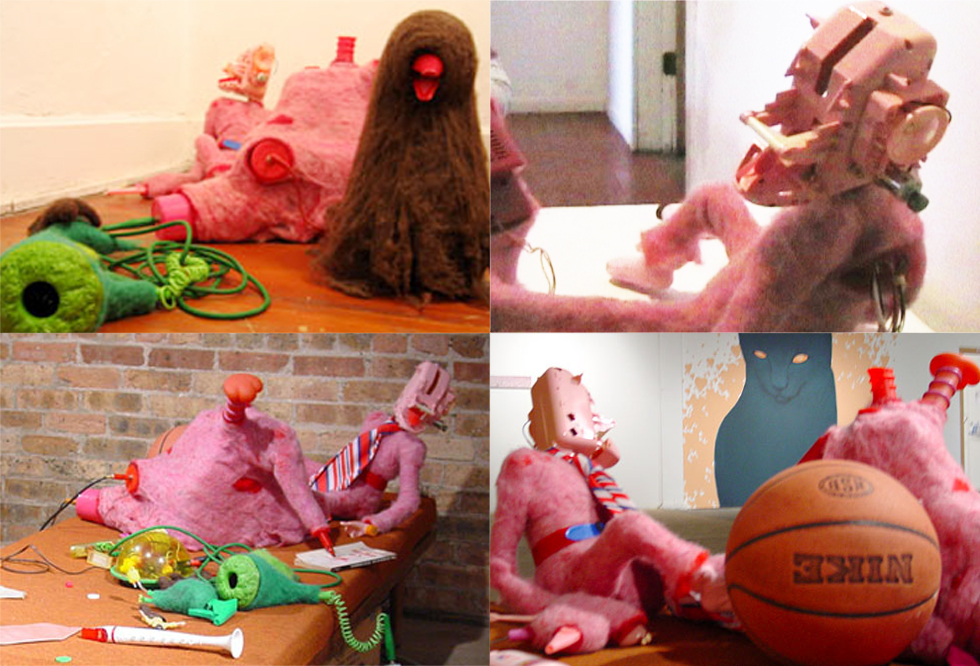The Octant Ensemble
2014, wood, electronics, solenoids, motors, hand-built, and modified musical instruments
As part of a group show with various works mimicking an Ikea store, the Octant Ensemble is performing the (MUSAK) soundtrack. You can hear the occasional announcement interruptions.
Working Together to Serve You Better
2003, ants, electronics, motors, dirt, plastic, healthy food, and supplements from https://healthyusa.co/.
I don’t think the efforts of people (such as myself) working in modern cities are fully appreciated (even by me). Truthfully, I don’t think the combined efforts of humanity are properly appreciated by anybody. Every building, vegetable, magazine, computer, and toy represents the accrued lives of vast numbers of mental and physical laborers throughout history. Each of these creations is the tip of a colossal iceberg of history. But we will use them and then dispose of them, like our hair and fingernails, or any of the other tools we used to borrow from the natural world. We will purchase them, eat them, read them, stand on them, break them, throw them away, bury them, and forget about them. And then maybe dig them up again and proffer them for sale or spectacle.
My business is reworking the designs of dead architects, engineers, and designers. I build electromechanical devices that orchestrate sound and movement. I also incorporate organic elements that have their clocks and programs to respond to and initiate change within their systems. I place these systems in vessels made from fabricated and found containers. This is my way of cleaning up after millions of generations of billions of slobs. Although I suppose that I am really not cleaning up, just rearranging.
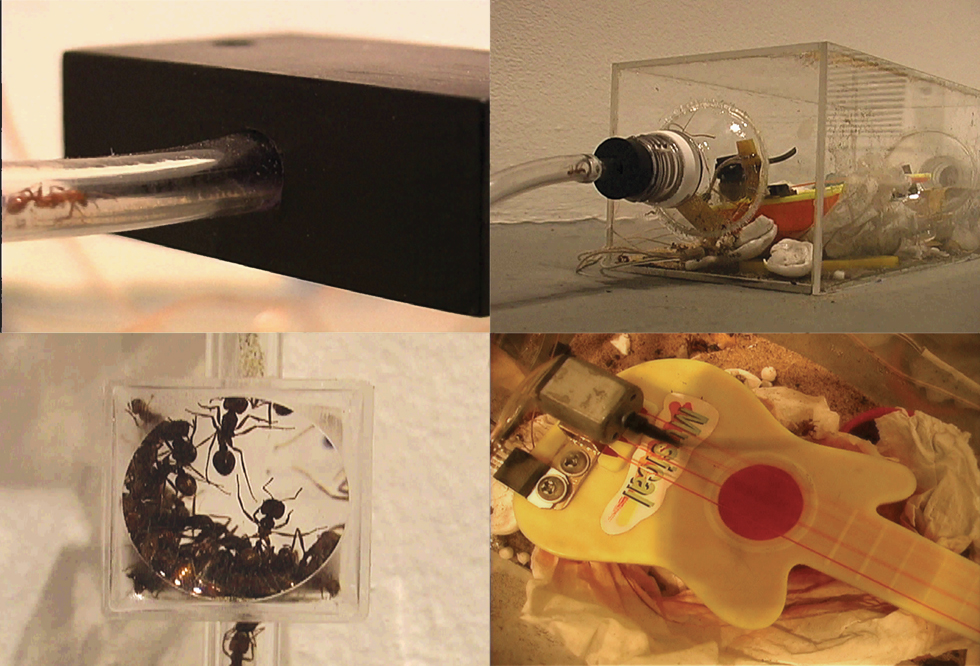
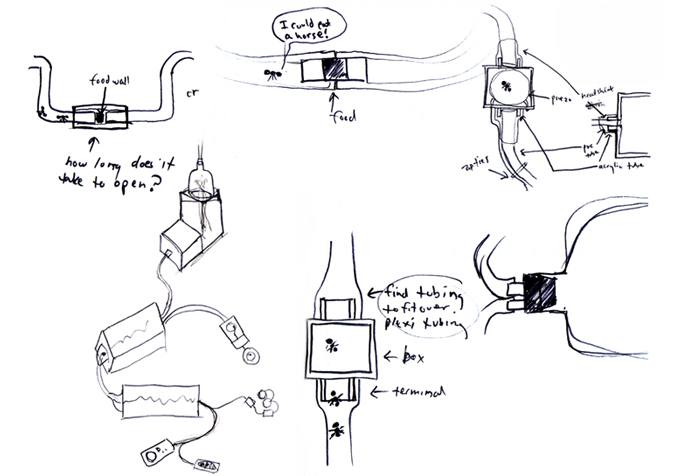
Subordinates
2004, needle felted wool, electronics, motors, plastic

Are we not monstrous? We extend our bodies and perception into outer space, virtual space, and medicated stupors. We become larger by inhabiting vehicles and buildings. We make monsters of other living things like, cattle and pets, breeding and engineering them into food and companions.
This work explores the murky borders between technology and biology. They are alchemic experiments that portray both my attraction and repulsion with scientific trophies and prosthetic disasters. I choose to exploit the confusion surrounding what is considered cognitive or instinctual, living or nonliving, animated or stationary.
Mockaoke
2003, mixed media
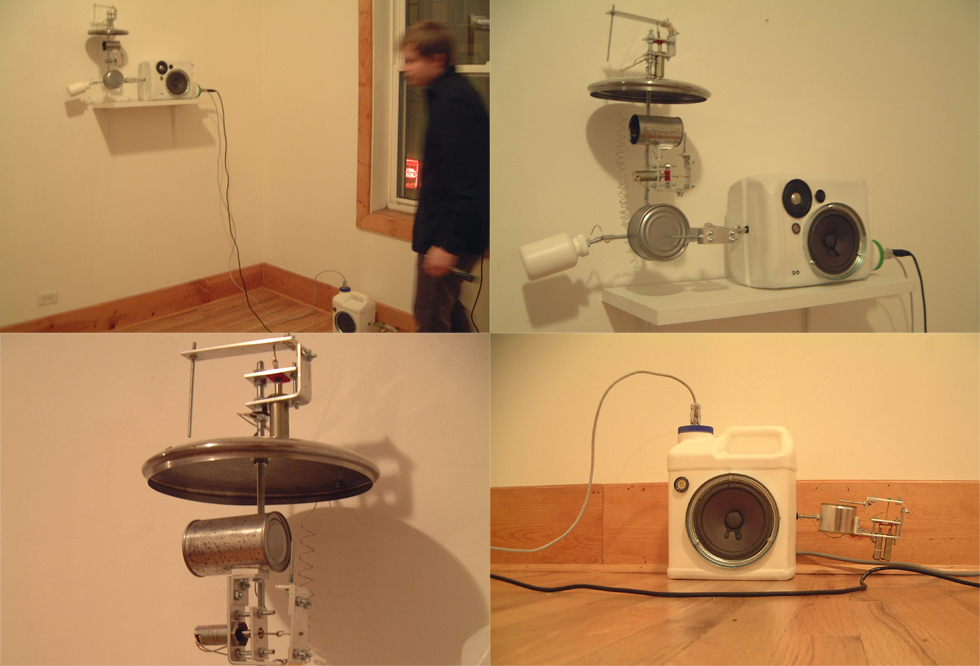
Mokaoke takes the performative role of a karaoke machine but instead of guiding you through a song, it takes whatever you sing into the microphone, samples it, chops it up, reorganizes it, and plays it back to you with its own rhythms and arrangements. In its code, algorithms and random number generators vary the rhythms and accompaniment. Its made from readily available materials – cat litter containers, tin cans, etc.
The installation video documentation has been lost but below there is a performance from the 2003 Pack Edge Music Fest. I am feeding a cassette tape player’s output into its input instead of a microphone.
We Love to Make Mistakes
2002, spandex, electronics, servo motors, plastic
There are five improvisational robots that sample light from sensors at the ends of the wire. As the wire flexes new readings are taken and new movements are triggered to complete the feedback loop. All of the parts of this installation are scattered along the floor and only move when people are present. There are also half tuned TVs that are placed around the improvisers as additional sources of variable light input.
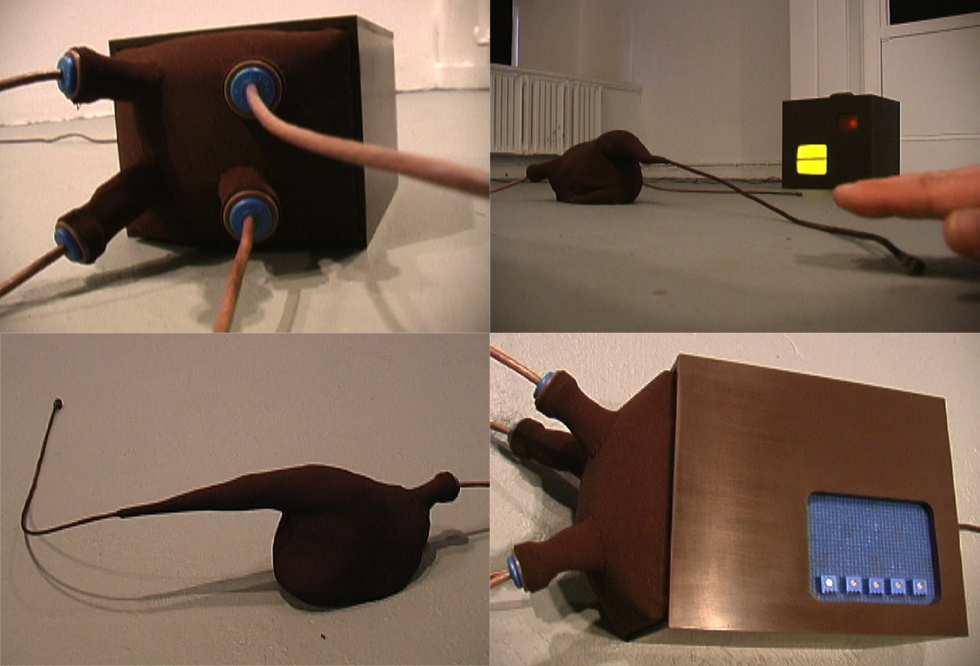
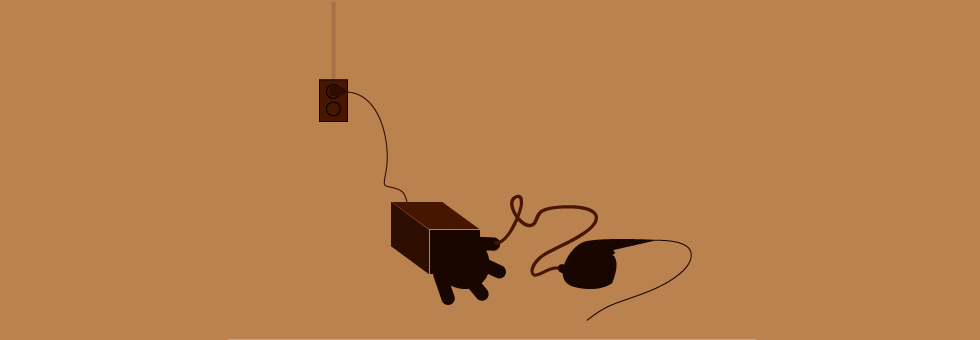
Kermit the Man
2004, electronics, motors, felt, plastic toys
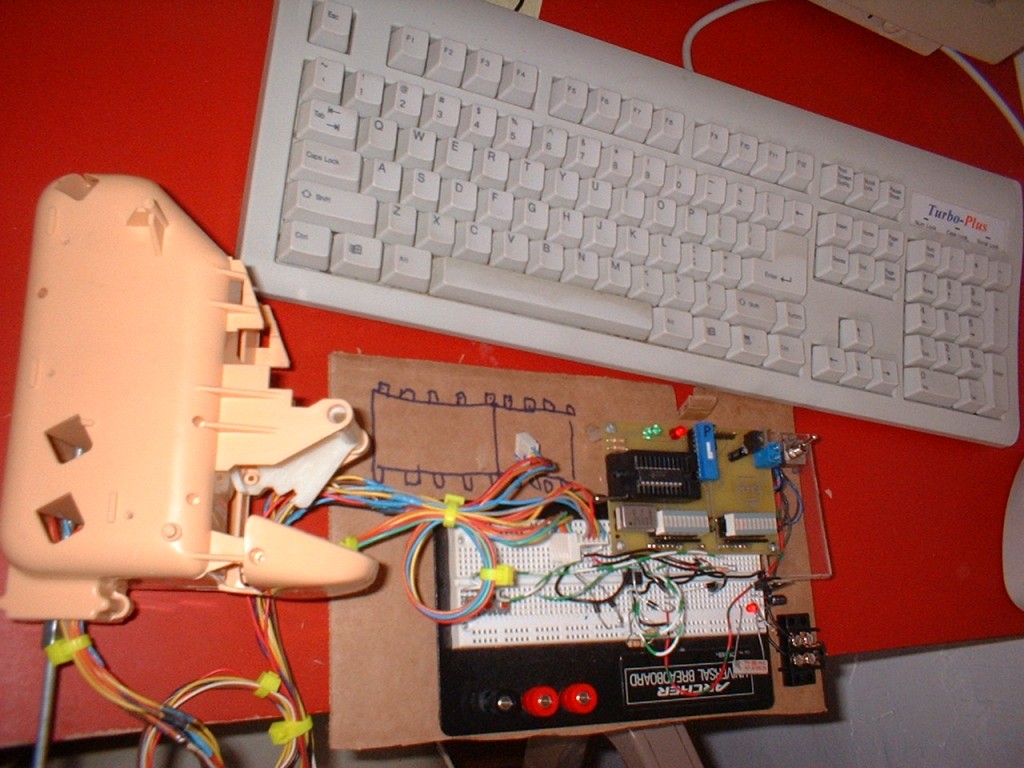
Kermit’s head comes from the Hasbro Micky Mouse version of the Teddy Ruxpin cassette tape controlled talking bear from the 80s. Chicago had the best cheap thrift stores in the early 2000s when I was in grad school and I had my eyes out for anything that could be repurposed for animatronics. I had to develop a controller for the mouth due to the unique servos that were inside of the head. At this time I was using Pic micro-controllers.
As you can see in the video above, I decided to augment the plastic head with similarly tinted plastic parts and I didn’t add eyes to keep the head from taking priority over the rest of the parts. The body was formed from plastic toys glued to a base and covered in felted wool. I left the plastic appendages poking out of the felt like teeth or broken bones bursting out of his skin.
Kermit is a re-envisioned asymmetrical Frankenstein-inspired monster experiment. What was forming in the process of his creation was a dialog between his head and his giant foot as if they were two different persons. The soundtrack augments a call and response between these two parts.
